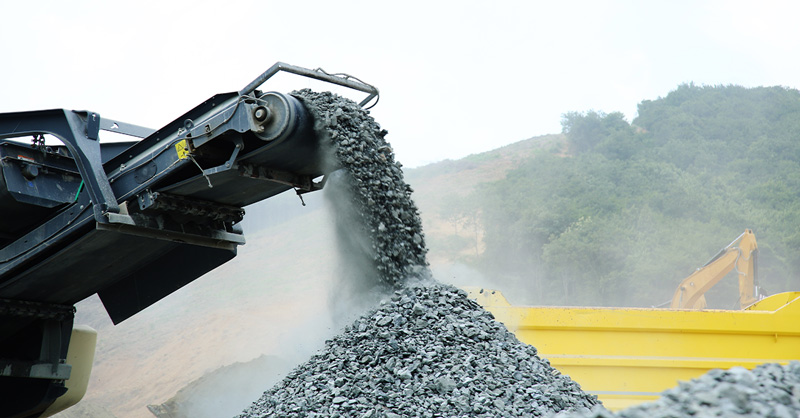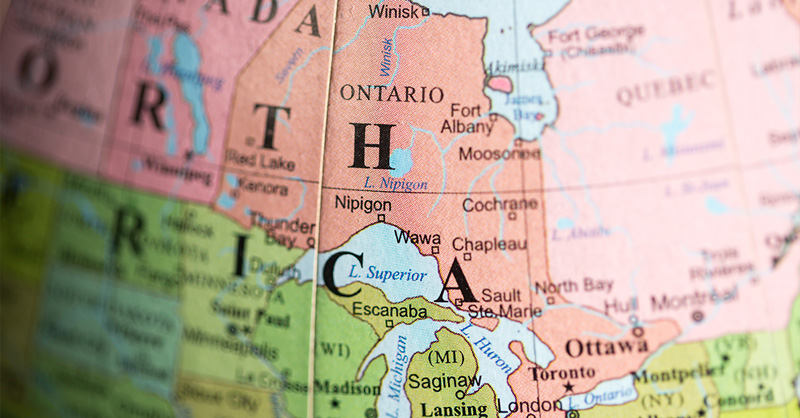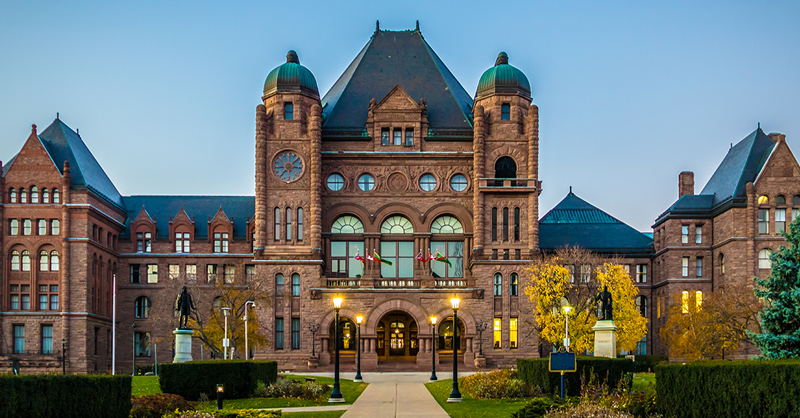On May 15, Ontario’s Minister of Finance, the Honourable Peter Bethlenfalvy, tabled the 2025 Budget: A Plan to Protect Ontario. The budget outlines significant investments in infrastructure, critical minerals, clean energy, workforce development, and interprovincial trade, but also raises critical questions regarding the feasibility of delivering these projects on time and on budget, the long-term sustainability of the funding commitments, and transparency of implementation plans and performance metrics.
OSPE participated in the pre-budget consultation process and is encouraged to see several of our recommendations reflected in energy, infrastructure, employment, and digital innovation. However, notable gaps persist in key engineering domains, including climate resilience, sustainability standards, housing design, and the integration of engineering talent across strategic sectors.
Ontario’s economy has shown resilience through recent global disruptions, but the 2025 Budget arrives amid heightened economic uncertainty, most notably, escalating U.S. trade aggression. The government projects a return to fiscal balance by 2027–28, yet forecasts a $6.0 billion deficit for 2024–25 and a larger $14.6 billion shortfall for 2025–26. Although projected revenues for 2024–25 are $221.6 billion, $13.4 billion higher than previously estimated, growth is driven primarily by short-term gains, leaving the province’s long-term fiscal outlook uncertain.
Spending is expected to reach $212.4 billion, with substantial allocations to health, education, infrastructure, and economic development. While Ontario’s improved debt-to-GDP ratio and reduced interest costs offer some optimism, the removal of a $1.0 billion reserve weakens the province’s flexibility to respond to unforeseen challenges -an important consideration for engineers involved in long-term infrastructure and capital planning.
In summary, while the 2025 Budget represents progress in several priority areas, it stops short of delivering a future-ready vision that fully leverages Ontario’s engineering expertise to drive innovation, resilience, and competitiveness.
OSPE will continue to advocate for evidence-informed infrastructure planning, climate-conscious development, and stronger integration of engineers in public decision-making across all sectors of provincial investment.
Budget Framework: Eight Strategic Pillars
The 2025 Budget is organized around eight policy pillars:
- A Plan to Protect Ontario
- Reducing reliance on U.S. trade.
- Advancing long-term economic sovereignty and resilience.
- Helping Workers and Businesses Weather the Storm
- $11B in immediate support including:
- $9B in tax deferrals for 80,000 businesses.
- $2B in WSIB rebates.
- $40M Trade-Impacted Communities Program.
- $20M for new workforce training and support centres.
- Creation of a $5B Protecting Ontario Account for tariff-impacted businesses.
- $11B in immediate support including:
- Unleashing Our Economy
- $1.3B expansion of the Ontario Made Manufacturing Investment Tax Credit.
- $500M Critical Minerals Processing Fund.
- Streamlined “One Project, One Process” model.
- $3B in Indigenous equity guarantees and scholarships.
- $50M Ontario Together Trade Fund.
- Support for Small Modular Reactors and nuclear site refurbishment.
- $2.5B Skills Development Fund and $750M for STEM postsecondary seats.
- Building Ontario
- $200B, 10-year infrastructure investment plan.
- Key projects: Highway 413, Bradford Bypass, subway expansions, GO 2.0.
- $5B Building Ontario Fund.
- $400M boost for Housing-Enabling Water Systems Fund.
- Keeping Costs Down
- Permanent gas tax cuts and toll removal on Highway 407 East.
- One Fare transit program.
- Direct affordability supports for families.
- Cleaning Up Our Streets
- $1B for police training.
- Operation Deterrence to combat border-related crime.
- Homelessness and addiction recovery hubs.
- Delivering Better Services
- $2.1B to expand primary care access.
- $56B for hospital development.
- $30B for school and childcare expansion.
- Ready to Protect Ontario
- Emphasizes partnerships with municipalities, unions, Indigenous partners.
- Focused on building social and economic resilience.
As part of OSPE’s ongoing advocacy, we have assessed Ontario’s 2025 Budget with a focus on the areas that most directly affect the engineering profession: infrastructure, housing, energy, employment, education, digital innovation, and natural resource development.
The sections that follow compare government commitments with OSPE’s pre-budget submission to identify where the engineering community has been included, where opportunities have been missed, and how Ontario can better harness its engineering capacity to meet future challenges.

Tariff Impacts, Industrial Support, and Workforce Transitions
Ontario’s 2025 Budget presents a wide-ranging response to global economic uncertainty, particularly in light of escalating U.S. tariffs. While the government’s commitment to protecting local businesses and workers is evident, OSPE’s review highlights both opportunities and gaps when it comes to the engineering profession.
Addressing Tariff Impacts and Economic Disruption
A major headline of this year’s budget is the creation of the Protecting Ontario Account (POA), a $5 billion fund aimed at supporting businesses and workers impacted by tariff-related disruptions. The first $1 billion will provide immediate liquidity relief, while the remaining $4 billion is earmarked for longer-term strategic investments.
In tandem, the province is offering a six-month deferral on provincially administered business taxes, providing up to $9 billion in cash flow support for 80,000 businesses. Additional support comes through Workplace Safety and Insurance Board (WSIB) premium reductions and $4 billion in rebates.
OSPE Alignment: Partial
These are important and timely supports for Ontario’s industrial sectors, many of which employ engineers in roles ranging from systems design to advanced manufacturing. However, the absence of any reference to engineering expertise represents a missed opportunity to highlight the profession’s role in driving innovation and long-term industrial resilience..
Investments in Industrial Innovation and Modernization
The budget includes new and continued investments in two major industry innovation programs:
- Ontario Vehicle Innovation Network (OVIN): $73 million over four years to support mobility-focused R&D, regional innovation hubs, and SME partnerships.
- Ontario Automotive Modernization Program (O-AMP): $12 million over three years to support technology adoption and process upgrades in the auto parts supply chain.
OSPE Alignment: Strong, but Incomplete
OSPE welcomes these targeted programs, especially in sectors undergoing rapid technological transformation. However, we emphasize the need for parallel investments in engineering talent development, procurement reform, and inclusive workforce strategies to ensure long-term competitiveness.
Workforce Transition and Upskilling Supports
Ontario is committing $20 million to establish new workforce transition and support centres for laid-off workers. These centres will connect individuals to training, upskilling, job search resources, and Employment Ontario programs.
OSPE Alignment: Limited
This is a positive step, but a more impactful approach would involve direct investment in engineering-specific training and professional development, including bridging programs for internationally trained engineers, a key OSPE recommendation.
Community-Level Economic Resilience
The newly launched Trade-Impacted Communities Program (TICP) will distribute $40 million in flexible grants to municipalities, sector associations, and economic development organizations to address local supply chain disruptions and support new procurement strategies.
OSPE Alignment: Promising, but Lacking Specificity
This program has strong potential to enable locally driven engineering solutions that improve resilience and regional development. However, the absence of any direct reference to engineering expertise or regulatory modernization risks leaving a critical profession underutilized.

Infrastructure
Ontario’s 2025 Budget introduces a bold 10-year, $200 billion infrastructure investment plan, touted as the largest in the province’s history. While this unprecedented scale signals a strong commitment to growth and development, OSPE has reviewed the details through an engineering lens and measured them against the priorities we put forward earlier this year.
Building Faster and Smarter
To accelerate project timelines and mitigate global economic uncertainty, the government is doubling down on infrastructure delivery. The 2025 Budget emphasizes getting shovels in the ground sooner—especially in transportation, health, and housing infrastructure—by fast-tracking early works, streamlining approvals, and embracing digital and modular construction techniques.
Key examples include:
- Early construction on Highway 413 and Bradford Bypass segments.
- Early site works for the Mississauga Hospital and Queensway Health Centre redevelopment.
- Use of modular builds and design standardization to speed up housing and public infrastructure delivery.
OSPE Alignment: Cautious
Speed and scale are important, but must be balanced with long-term sustainability. OSPE continues to call for engineering-informed planning that integrates climate resilience, inclusive design, and smart technology standards.
Embracing Innovation: Digital Twins and Smart Infrastructure
Ontario is exploring digital twin technology to improve capital project delivery and risk management. Digital twins are real-time, data-informed models that simulate physical infrastructure systems, allowing for more efficient planning, monitoring, and performance evaluation.
OSPE Alignment: Promising
This aligns with OSPE’s calls for enhanced use of digital tools and data-driven decision-making. However, we encourage broader adoption across ministries and integration into the provincial infrastructure planning framework.
Strategic Investments in Housing-Enabling Infrastructure
To support population growth and unlock new housing, the budget includes:
- An additional $400 million for the Housing-Enabling Water Systems Fund (HEWSF) and Municipal Housing Infrastructure Program (MHIP).
- Nearly $2 billion over four years committed across both programs.
- A $35 million investment to expand the G.E. Booth Water Resource Recovery Facility, enabling 46,000 housing units.
- $1 billion in new low-interest loans for municipal water infrastructure via Infrastructure Ontario.
OSPE Alignment: Strong
This supports our recommendation to prioritize water infrastructure as a prerequisite to housing. However, greater emphasis on decentralized, climate-resilient, and green infrastructure solutions remains needed.
Urban Revitalization and Climate-Resilient Communities
Ontario has committed $975 million (in partnership with the federal government and City of Toronto) to accelerate the Waterfront Toronto Revitalization Plan, enabling over 14,000 homes and an estimated 100,000 skilled trades jobs. This builds on the Port Lands Flood Protection Project and incorporates flood-resilient infrastructure.
OSPE Alignment: Strong
This is a model for how multi-level, engineering-informed urban development can serve both housing and climate goals.
Ontario Community Infrastructure and Broadband Expansion
- Ontario Community Infrastructure Fund (OCIF): $400 million for 423 small, rural, and northern communities.
- High-speed internet access: Nearly $4 billion invested to connect underserved communities, enabling education, remote work, and local development.
OSPE Alignment: Positive
We support equitable infrastructure access but recommend the incorporation of engineering-driven planning guidelines to ensure cost-effective and sustainable outcomes.
Advancing Transit and Transportation Infrastructure
Ontario is continuing major investments in both road and transit infrastructure:
Transit Investments
- Expansion of GO Rail and GO 2.0 for 15-minute, two-way service(This initiative aims to transform GO Transit from a commuter-focused system into a regional rapid transit network, enabling more frequent, all-day service in both directions across key corridors in the Greater Golden Horseshoe).
- Major subway projects including the Ontario Line, Eglinton Crosstown West, Yonge North, and Sheppard Extensions.
- Support for new transit hubs such as East Harbour(East Toronto).
- Refurbishment of GO Transit coaches to extend their lifespan by 20 years.
OSPE Alignment: Strong
This reflects our recommendations for transit-oriented investment. OSPE continues to push for greater attention to first-mile/last-mile solutions, integrated land use planning, and smart transit systems.
Highway and Road Projects
- Continued expansion of Highway 413, Bradford Bypass, and 401 Tunnel Expressway.
- Investments in Highway 17, 11/17, 69, and northern corridor connectivity.
- Increased funding for municipal infrastructure through the Connecting Links Program.
OSPE Alignment: Mixed
While these projects provide engineering opportunities, we urge the government to prioritize sustainable mobility, climate risk analysis, and green construction practices over car-centric expansion.

Energy and Environment
Ontario’s 2025 Budget outlines a robust vision for energy security and climate action, with a focus on expanding nuclear capacity, modernizing hydroelectric assets, and supporting emerging technologies like hydrogen. These investments are framed not only as environmental necessities but as economic growth strategies to support industrial expansion and energy reliability.
Leading in Energy Security and Nuclear Innovation
The province will invest in:
- Expansion of small modular reactors (SMRs) at the Darlington site.
- Refurbishment of the Bruce and Pickering nuclear stations.
- New clean hydrogen production capacity.
- A $10.9 billion energy efficiency program to reduce demand and emissions.
OSPE Alignment: Very Strong
These priorities reflect many of OSPE’s energy resilience recommendations. Engineering plays a foundational role in nuclear innovation, grid modernization, and hydrogen development. However, the budget lacks specific reference to engineering leadership in planning, oversight, and technical execution of these projects.
Supporting Agri-Food and Forestry Resilience
The budget provides targeted support to farmers and processors, including initiatives to advance biomass and wine production technologies.
OSPE Alignment: Weak
This sector presents opportunities for agricultural, environmental, and process engineers. However, engineering is not mentioned in the context of sustainability, emissions reduction, or operational innovation.
Climate Resilience and Environmental Protection
Notably, the budget does not offer a coordinated climate strategy or clear direction on climate adaptation planning, which is critical as Ontario experiences more frequent extreme weather events.
OSPE Alignment: Insufficient
While OSPE welcomes investments in low-emission energy, the lack of funding and policy direction for nature-based solutions, green infrastructure, and climate risk assessments is a missed opportunity to embed engineering in long-term environmental resilience planning.

Natural Resources and Critical Minerals
The 2025 Budget positions Northern Ontario as a strategic growth hub in the global race for critical minerals. Investments in exploration, processing capacity, and Indigenous partnership development aim to accelerate progress toward a vertically integrated supply chain.
Unlocking Critical Minerals and the Ring of Fire
- $500 million allocated to critical minerals processing and industrial infrastructure.
- Investments in junior exploration and innovation to attract private-sector activity.
- Continued broadband expansion and transportation access to remote resource sites.
OSPE Alignment: Strong
These measures align with OSPE’s recommendations for infrastructure investment and sustainable resource development. However, the budget falls short in outlining how engineering expertise will guide permitting, environmental assessments, or clean technology adoption. Greater emphasis on engineering-led standards could ensure efficiency, safety, and environmental stewardship.
Supporting Resource and Regional Economies
- Increased support for Indigenous equity participation and economic development in mining and energy.
- Expanded funding for regional development corporations and community partnerships.
OSPE Alignment: Strong
OSPE strongly supports the inclusion of Indigenous partners in resource development. We recommend explicit promotion of engineering capacity-building within Indigenous communities and targeted engagement of Indigenous engineers to help co-lead project design, assessment, and long-term operations.

Digital Technology & Innovation
The 2025 Budget positions Ontario as a leader in digital innovation through key investments in artificial intelligence, cybersecurity, and life sciences. These commitments are framed as essential to building economic resilience, attracting global capital, and driving future-ready industries.
Fueling Innovation and Technology Leadership
- Increased support for biomanufacturing, advanced R&D, and commercialization through expanded venture capital investments.
- Continued development of Ontario’s life sciences and health technology sectors.
OSPE Alignment: Strong
These priorities align with OSPE’s advocacy around innovation and technology commercialization. However, the budget does not clarify how engineers will be engaged in scaling these sectors. Engineering-driven R&D, product design, and systems integration are foundational to the life sciences and tech economy.
Becoming a Global AI Leader
- Investments in critical digital technologies and computing infrastructure.
- Introduction of new cybersecurity legislation.
- Support for AI development and adoption across sectors.
OSPE Alignment: Promising
The government’s emphasis on AI reflects OSPE’s call for future-ready technology policies. Still, the plan lacks clear direction on engineering education and professional development for AI system design, regulatory compliance, and risk mitigation; areas where engineers are essential contributors.
Bridging the Talent Gap in Tech
- $750 million in postsecondary funding to increase STEM program capacity.
- Focus on aligning education with industry needs.
OSPE Alignment: Encouraging but Incomplete
STEM expansion is a step in the right direction, but engineering-specific pathways and lifelong learning supports are needed to prepare professionals for emerging digital roles. Targeted upskilling in areas like AI, data systems, and cybersecurity would ensure Ontario’s engineers are equipped to lead in a fast-evolving digital economy.

Economic Development & Trade
Ontario’s 2025 Budget reinforces the province’s ambition to solidify its standing as a competitive, innovation-driven economy amid rising geopolitical challenges. With heightened trade tensions, particularly with the United States, Ontario is accelerating its investment in business incentives, industrial productivity, and market diversification.
OSPE evaluated these policies in light of engineering’s role in enabling innovation, resilience, and competitiveness.
Strengthening Ontario’s Economic Foundation
- Nearly $70 billion in total economic investments.
- $11.9 billion in supports for businesses, including tax relief and regulatory reform.
OSPE Alignment: Generally Aligned
This approach can indirectly benefit engineering-intensive sectors by lowering operational costs and encouraging private-sector innovation. However, engineers are not explicitly referenced in strategy execution. Acknowledging the profession’s contribution to economic planning, process improvement, and risk analysis would enhance this alignment.
Securing Manufacturing and Processing Jobs
- Expanded Ontario Made Manufacturing Investment Tax Credit.
- New funding to scale innovation in advanced manufacturing.
OSPE Alignment: Strong
This aligns closely with OSPE’s recommendations to boost domestic industrial capacity through innovation. Explicit inclusion of engineering standards, workforce development, and technical expertise would improve implementation effectiveness.
Building Economic Stability Through Invest Ontario
- Additional $600 million for the Invest Ontario Fund.
- Support for anchor projects like the $150 million Siemens AI Manufacturing Centre.
OSPE Alignment: Strong Potential
Invest Ontario has the mandate and capital to drive high-value industrial growth. We recommend a formal mechanism to incorporate engineering leadership in project evaluation, design planning, and scaling of technological solutions.

Workforce Development
Ontario’s 2025 Budget emphasizes skills development, inclusive employment strategies, and support for STEM pathways. These investments are critical to addressing workforce shortages and preparing Ontario’s labour force for technological and industrial transitions. OSPE analyzed these measures to assess alignment with engineering-specific training needs and professional development.
Empowering Workers and Communities
- Over $1 billion in new investments through the Skills Development Fund.
- $750 million to expand postsecondary STEM programs.
OSPE Alignment: Strong
This funding supports broader talent pipeline growth and enhances access to technical education. OSPE supports these investments and encourages targeted support for engineering disciplines, including co-op programs, experiential learning, and diversity in STEM.
Expanding Upskilling and Training Access
- Establishment of regional workforce transition centres for laid-off workers.
- Training support through Employment Ontario and local service providers.
OSPE Alignment: Moderate
These centres offer important tools for job seekers. However, explicit funding for engineering bridging programs, licensing support, and international credential recognition would significantly boost alignment with OSPE’s workforce recommendations.
Advancing Equity in Workforce Programs
- Targeted strategies to include underrepresented groups in the labour market.
OSPE Alignment: Promising
A focus on inclusion is welcome and should be accompanied by actions to support equity in engineering education, hiring, and advancement. OSPE encourages data transparency and outcome measurement to ensure these programs deliver equitable results.

Affordability Measures
Ontario’s 2025 Budget introduces several affordability-focused measures to support families, drivers, commuters, and renters. While these initiatives primarily offer short-term financial relief, OSPE has reviewed them for their longer-term implications on sustainable infrastructure, equitable access, and climate-conscious planning.
Direct Financial Support for Ontarians
- $200 taxpayer Rebate beginning January 2025, benefiting 15 million Ontarians.
- Continued Ontario Electricity Rebate (OER) for eligible households and small businesses.
OSPE Alignment: Supportive
These initiatives offer welcome relief amid economic strain. OSPE acknowledges that household financial stability underpins community resilience and the functioning of essential infrastructure.
Keeping Energy and Fuel Costs Down
- Legislation to make gasoline and fuel tax cuts permanent.
- Advocacy against the federal carbon tax, including support for a rate freeze at $0 as of April 1, 2025.
OSPE Alignment: Mixed
While cost savings benefit consumers, OSPE cautions that sustained tax cuts must not come at the expense of investments in clean energy, emissions reductions, and climate adaptation infrastructure.
Affordable Transit Through the One Fare Program
- Eliminates double fares across the TTC and six regional transit systems.
- Delivered over $123 million in savings since February 2024.
OSPE Alignment: Strong
This supports OSPE’s transit equity goals by promoting accessible, multimodal transportation. Integrating these savings with sustainable urban design strategies would amplify the benefits.
Lowering Costs for Drivers
- Toll removal on Highway 407 East.
- Elimination of tolls on Highways 412 and 418.
- Legislation to prevent new road tolls and personal vehicle taxes.
OSPE Alignment: Mixed
While easing the burden on drivers, these measures risk reinforcing car dependency. OSPE supports balancing vehicle affordability with strategic investment in low-emission transportation and active mobility infrastructure.
Housing Affordability and Property Tax Reform
- HST exemption on new purpose-built rental housing.
- Option for municipalities to reduce property taxes by up to 35% on affordable rental units.
OSPE Alignment: Supportive
These tax tools complement OSPE’s housing-enabling infrastructure agenda. We continue to advocate for parallel investment in energy-efficient, climate-resilient housing design to achieve long-term affordability and environmental sustainability.

Conclusion: Recognizing Progress, Advancing Further
Ontario’s 2025 Budget reflects meaningful progress and OSPE is encouraged a number of objectives. Several long-standing recommendations: ranging from investments in clean energy and digital innovation to housing-enabling infrastructure and engineering education, are now being woven into the province’s policy framework. These are significant wins for Ontario’s engineers and the communities that rely on their expertise.
But while the direction is promising, the work is far from finished.
Despite the scale of investment and ambition, the budget still falls short in recognizing engineering expertise as a foundational element in shaping Ontario’s future. From climate adaptation to infrastructure design and industrial innovation, engineers are too often cast in supporting roles rather than seen as essential partners in policy creation. That must change.
Ontario’s evolving economic landscape, shaped by escalating U.S. tariffs, trade diversification, and the urgent need for resilient infrastructure, presents an opportunity to redefine the role of engineers in the province’s strategic direction. Engineers are uniquely equipped to support industrial transitions, strengthen supply chains, and lead innovation in both the public and private sectors.
To fully unlock the province’s potential, future budgets must:
- Involve engineers early in the policy development process, not just at the implementation stage.
- Expand targeted investment in engineering, upskilling and workforce inclusion, particularly for internationally trained professionals.
- Embed engineering-informed standards across infrastructure, sustainability, and risk planning.
Ontario cannot afford to approach the future with yesterday’s toolkit. Engineers are not just builders, they are designers of safer, smarter, and more sustainable systems. Their input is critical as the province navigates an increasingly complex and competitive global landscape.
OSPE will continue to advocate for evidence-based public policy that puts engineers at the centre of Ontario’s growth and resilience—because when engineers lead, Ontario thrives.





Leave a Comment